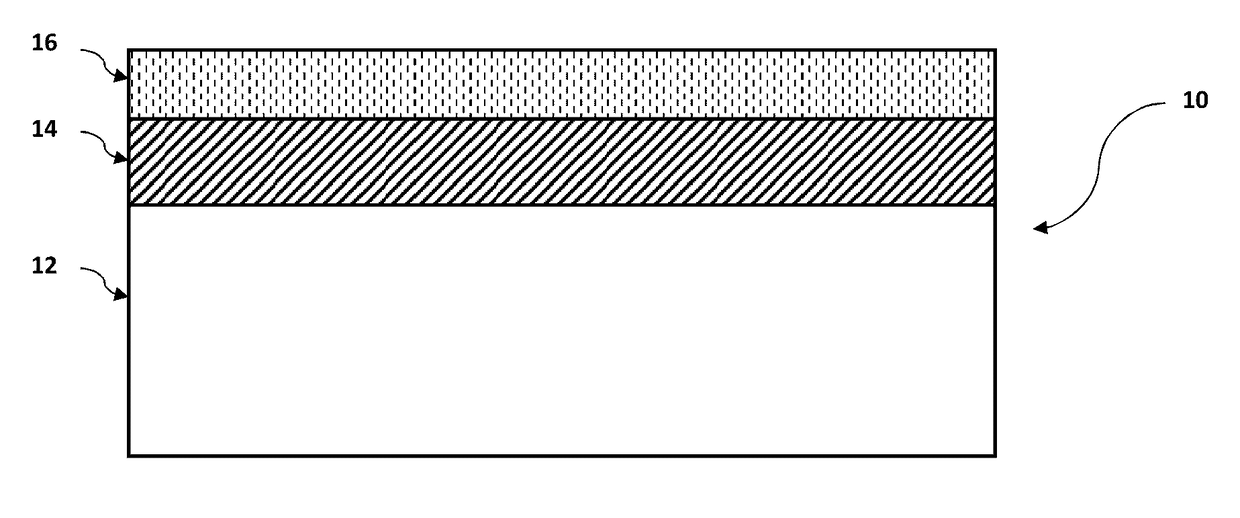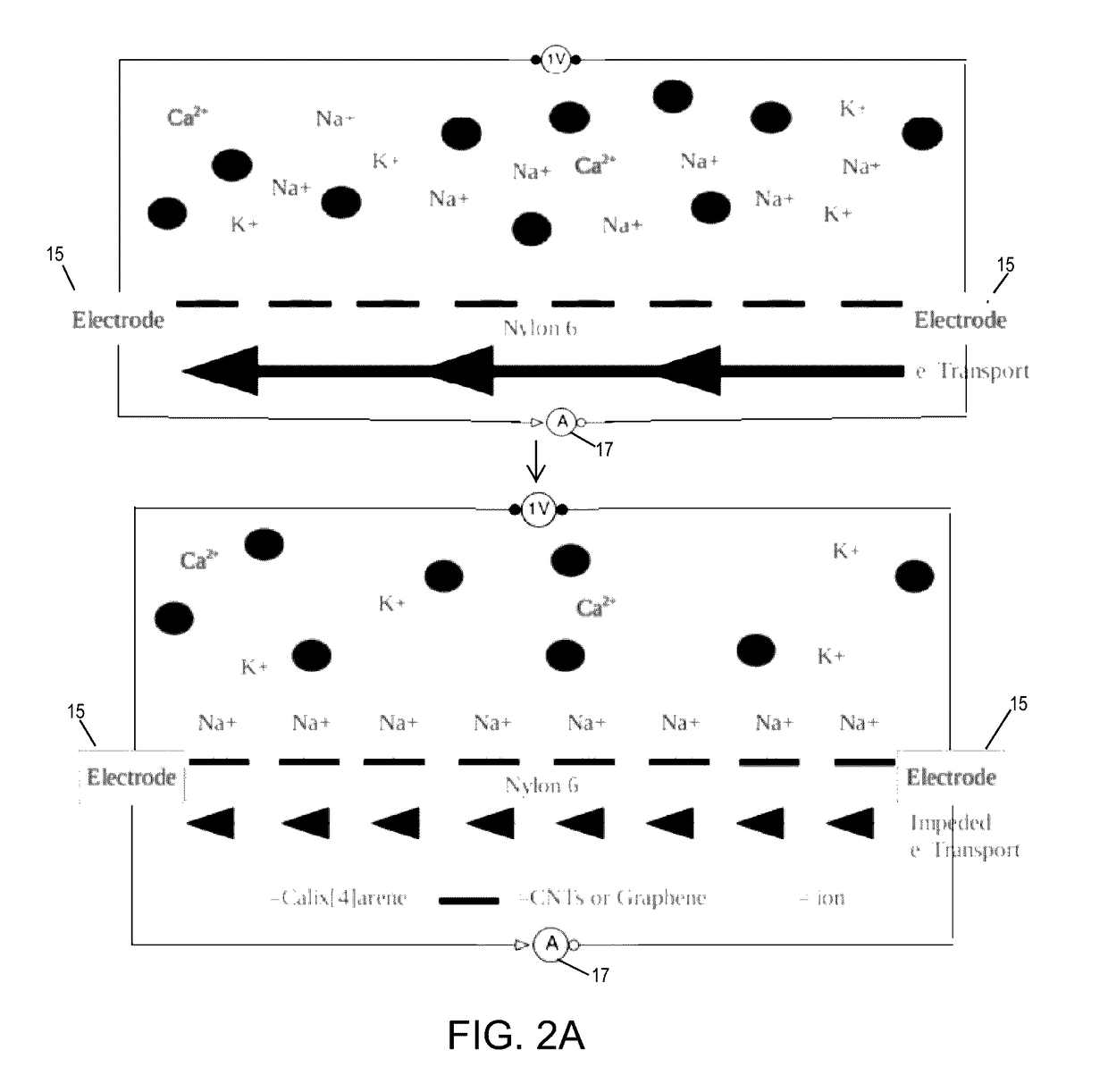Flexible electrode for detecting changes in temperature, humidity, and sodium ion concentration in sweat
a technology of sodium ion concentration and sweat, which is applied in the field of flexible or wearable sensor, can solve the problems of affecting the operation, affecting the operation, and affecting the operation, and the procedure takes about an hour
- Summary
- Abstract
- Description
- Claims
- Application Information
AI Technical Summary
Benefits of technology
Problems solved by technology
Method used
Image
Examples
example 1
Ion Sensor
[0104]In a non-limiting example of the present invention, an optimized sensor is fabricated using nylon-6 dip-coated in MWCNTs in water (stabilized using a TX-100 surfactant) and then dip-coated in p-tert-butyl-calix[4]arene dissolved in toluene.
Chemicals
[0105]The nylon-6 [poly(caprolactam)] (Scientific Polymer Products, Inc., viscosity average MW—10,000, pellets), multi-walled carbon nanotubes [MWCNTs] (Nanostructured & Amorphous Materials, Inc., 10-20 nm diameter, 0.5-2 μm length, 200 m2 / g), p-tert-butyl-calix[4]arene (Aldrich), acetic acid (Sigma-Aldrich, ≧99%), formic acid (Fluka Analytical, puriss, ˜98%), Triton® X-100 (Sigma), and Triton® X-114 (Acros Organics) were used as purchased.
Sensor Fabrication
[0106]Nylon-6 nanofiber (NF) mats were electrospun using a 14 wt % nylon-6 in formic acid / acetone (1:1 wt %) at a rate of 9.1 μL / min. The electrospinning conditions (30 kV voltage and 8 cm needle-collector distance) were implemented for a four hour block on a rotating d...
example 2
FRTD
[0113]In a non-limiting example of the present invention, an optimized FRTD sensor is fabricated by electrospinning nylon-6 as a membrane style substrate, vacuum filtration of MWCNTs onto the nylon scaffold, and vapor phase polymerization of pyrrole to PPy onto the MWCNT functionalized nylon nanofibers.
Chemicals
[0114]All chemicals and materials were used as received with no further purification. Nylon-6 with a viscosity-averaged molecular weight of 10,000 grams per mole was acquired from Scientific Polymers Inc. (U.S.A.). MWCNTs with diameters in the range of 10 to 20-nanometers and 0.5 to 2-micrometers in length were obtained from Nanostructured and Amorphous Materials Inc. (U.S.A.). Triton X-114 (TX-114) surfactant is from Acros Organics (U.S.A.) and iron chloride hexahydrate is from Flynn Scientific Inc. (U.S.A.). Pyrrole (≧99%), extra pure), formic acid (98%), and acetic acid (≧99%) were acquired through Sigma Aldrich (U.S.A.).
[0115]The nylon-6 substrate was e...
PUM
 Login to View More
Login to View More Abstract
Description
Claims
Application Information
 Login to View More
Login to View More - R&D
- Intellectual Property
- Life Sciences
- Materials
- Tech Scout
- Unparalleled Data Quality
- Higher Quality Content
- 60% Fewer Hallucinations
Browse by: Latest US Patents, China's latest patents, Technical Efficacy Thesaurus, Application Domain, Technology Topic, Popular Technical Reports.
© 2025 PatSnap. All rights reserved.Legal|Privacy policy|Modern Slavery Act Transparency Statement|Sitemap|About US| Contact US: help@patsnap.com



